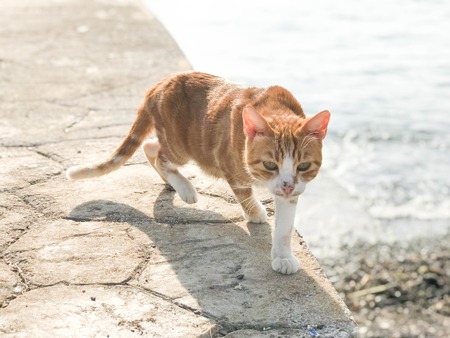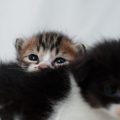Introduction to Cat Food Labelling in the UK
Choosing the right cat food is one of the most important decisions you can make as a pet owner in the UK. With so many brands and types available, understanding how to read cat food labels is crucial for ensuring your feline friend gets the nutrients they need for a healthy, happy life. In the UK, all commercial cat foods must comply with strict regulations set by organisations such as the Food Standards Agency (FSA) and the Pet Food Manufacturers’ Association (PFMA). These regulations are designed to protect pets by ensuring products are safe, accurately labelled, and nutritionally adequate. But simply seeing a product on supermarket shelves doesn’t guarantee it’s the healthiest option. Many labels use marketing language or highlight buzzwords that can be confusing or misleading. That’s why learning how to decode these labels is essential for making informed choices about your cat’s diet. By understanding what’s required by law and which terms actually indicate quality, you’ll be better equipped to select food that meets your cat’s specific needs—whether they’re a growing kitten, an active adult, or a senior needing extra care.
2. Key Components to Look For on Cat Food Labels
When choosing cat food in the UK, it’s vital to understand what you’re really feeding your feline companion. British pet food regulations require clear labelling, but knowing how to interpret these details makes all the difference. Here’s a practical breakdown of the main components you’ll find on cat food labels and what they mean for your cat’s health.
Protein Sources: The Foundation of Feline Nutrition
Cats are obligate carnivores, meaning their bodies need animal protein to thrive. Look for labels that specify the type and percentage of meat or fish used. The best foods clearly list named sources such as “chicken,” “beef,” or “salmon” at the top of the ingredients list, rather than vague terms like “meat and animal derivatives.”
| Label Term | Meaning | Best Practice |
|---|---|---|
| Chicken (min. 20%) | At least 20% chicken content, named source | Prefer products with high named meat percentage |
| Meat and animal derivatives | Unspecified mix of animal parts; may include lower-quality cuts | Avoid if possible; opt for specific meat sources |
| Fish (min. 15%) | Contains at least 15% fish, can be species-specific or mixed | Check for sustainable sourcing and named fish types |
Additives: Necessary or Not?
Additives in UK cat food often serve as preservatives, colourings, or flavour enhancers. While some vitamins and minerals are essential supplements, look out for artificial additives which may not be beneficial long term.
| Additive Type | Example | Is It Needed? |
|---|---|---|
| Vitamins & Minerals | Taurine, Vitamin E, Zinc Sulphate | Yes – crucial for balanced nutrition |
| Preservatives (natural) | Tocopherols (Vitamin E) | Yes – preferable to artificial options |
| Artificial Colourings/Flavours | E127, E133, unspecified colourants | No – choose recipes without artificial colours/flavours where possible |
Other Ingredients: Fillers and Grains
The inclusion of cereals such as wheat or maize is common in British cat foods, especially dry kibble. While small amounts can provide energy, too many fillers may dilute protein content. Always check where grains appear on the ingredients list; the higher up, the greater their proportion in the food.
Practical Tip:
The first three ingredients usually make up most of what’s in the bag or tin. If meat is not one of them, consider looking for an alternative product with more focus on animal protein.
Your Action Plan:
– Prioritise foods with clearly named meat/fish as main ingredients
– Minimise artificial additives
– Keep filler content low by checking ingredient order
– Choose UK-made brands that comply with local standards for transparency and quality assurance.

3. Decoding Nutritional Information and Claims
Understanding the nutritional information on UK cat food labels can be tricky, especially with so many terms and percentages being used. Knowing what these terms actually mean will help you make healthier choices for your cat. Below, we break down some of the most common nutrition-related phrases and claims found on British cat food packaging.
Common Nutrition Terms Explained
| Term | Meaning in the UK Context |
|---|---|
| Complete | A “complete” food contains all the nutrients your cat needs for daily health as set by FEDIAF (the European Pet Food Industry Federation). |
| Complementary | This food is meant to be mixed with other types, not fed alone, as it lacks some essential nutrients. |
| Analytical Constituents | The percentage breakdown of protein, fat, fibre, ash (minerals), and moisture in the food. |
| Meat and Animal Derivatives | A broad term covering all animal-based ingredients; does not always specify the source or quality. |
| Additives | Vitamins, minerals, preservatives, or colourants added to improve nutrition or shelf-life. |
Reading Percentages: What Matters Most?
By UK law, ingredients are listed in order of weight. If a label says “with chicken 4%,” this means only 4% of the product is chicken. Look for higher percentages of named meats for better quality. Typical analytical constituents you’ll see:
| Nutrient | Typical Range (Dry Food) | Why It Matters |
|---|---|---|
| Protein | 28-40% | Cats need high animal protein for muscle maintenance and energy. |
| Fat Content | 10-20% | Essential for energy and coat health. |
| Crude Fibre | 1-3% | Aids digestion but should be limited. |
| Ash (Minerals) | 5-8% | A measure of mineral content; too much can stress kidneys. |
| Moisture (in wet food) | 75-85% | Keeps cats hydrated—important if they don’t drink much water. |
Spotting Genuine Benefits Versus Marketing Language
- “Natural” or “Grain-Free”: These terms have no strict legal definition in the UK and may be used mainly for marketing. Always check the actual ingredient list for clarity.
- “Veterinary Approved”: This does not necessarily mean it’s better or officially endorsed by vets across the board—look for specific endorsements from reputable veterinary bodies.
- “No Added Artificial Colours/Preservatives”: This is positive, but remember that “natural” preservatives may still be present.
- “Rich in [Ingredient]”: If a product claims to be “rich in chicken,” it should contain at least 14% chicken according to UK guidelines. Always verify on the label.
- “Hypoallergenic”: This usually means common allergens are avoided (like beef or dairy), but there’s no absolute guarantee your cat won’t react.
Top Tip:
If you’re ever unsure about a claim, compare several products side-by-side and focus on the actual percentages and order of ingredients—not just bold statements on the front of the pack.
4. Understanding UK-Specific Certifications and Logos
When shopping for cat food in the UK, it’s essential to look beyond colourful packaging and clever marketing. Quality assurance marks and certifications provide an extra layer of trust, ensuring your cat’s diet meets established nutritional standards. Knowing how to recognise these marks will help you make confident and informed choices for your pet.
Key UK Cat Food Certifications
| Logo/Certification | What It Means | Why It Matters for Your Cat |
|---|---|---|
| FEDIAF | The European Pet Food Industry Federation standard, followed by reputable UK brands. | Ensures complete and balanced nutrition as per current scientific guidelines. |
| PETA Approved Vegan/Vegetarian | Indicates plant-based ingredients with no animal testing. | Suitable for owners seeking ethical or allergy-friendly alternatives. |
| UK Organic Certification (Soil Association, OF&G) | Verifies organic sourcing and production practices. | Reduces exposure to pesticides and artificial additives in your cat’s food. |
| Red Tractor | A UK-specific logo found on some meats, denoting high welfare and food safety standards. | Gives peace of mind about ingredient traceability and farming practices. |
How to Use These Certifications When Choosing Cat Food
- Check for the FEDIAF logo or mention: This is the gold standard for ensuring that a product meets all nutritional requirements set out for cats in Europe and the UK. If you see ‘Complete’ and ‘FEDIAF compliant’ on a label, you can trust it covers all of your cat’s dietary needs.
- Look for additional marks if relevant to your values: For example, choose Red Tractor or Soil Association certified foods if you prioritise animal welfare or organic sourcing.
- Avoid products with no recognisable certifications: Especially if they use vague terms like “premium” or “natural” without any official backing.
The Bottom Line on Certifications
Understanding what each certification means helps you filter out misleading claims. By focusing on recognised logos such as FEDIAF and other reputable UK assurance schemes, you can select food that not only satisfies your cat’s hunger but also supports their long-term health.
5. Common Pitfalls and Misleading Claims
Navigating cat food labels in the UK can be tricky, especially with clever marketing tactics designed to catch your eye. To make truly healthy choices for your feline companion, it’s essential to recognise some of the most common misleading phrases and strategies used by brands. Below is a table highlighting these pitfalls and practical tips on how to avoid being misled:
| Misleading Phrase or Tactic | What It Really Means | How to Avoid Being Misled |
|---|---|---|
| “Complete” vs “Complementary” | “Complete” foods meet all nutritional needs; “complementary” foods do not and must be mixed with other products. | Always look for “complete” on the label if feeding as a sole diet. |
| “With Chicken”, “Rich in Beef”, etc. | UK rules only require minimum 4% of the named meat; the rest can be anything else. | Check the actual percentage of meat ingredients listed on the packaging. |
| Use of “Natural” or “Premium” | No legal definition; may still include additives, fillers, or low-grade ingredients. | Read the full ingredients list instead of relying on vague claims. |
| “No Added Sugar” or “No Artificial Colours” | The food may still contain other undesirable ingredients like preservatives or flavour enhancers. | Review all listed ingredients for hidden additives. |
| Pictorial Marketing (e.g. showing whole meats, vegetables) | The pictures often exaggerate the real content inside the pack. | Trust the ingredient list, not just images or marketing buzzwords. |
Understanding Ingredient Order and Naming Tricks
Ingredients are listed in descending order by weight before cooking. Manufacturers may use ‘ingredient splitting’—breaking down similar items (like different types of cereals) so they appear lower on the list. This makes it seem like there’s more meat content than there actually is.
Tip:
If you see several grains or fillers separated by name (e.g., maize, wheat, rice), their combined quantity may outweigh the animal protein source.
The Importance of Analytical Constituents
This section details percentages of protein, fat, fibre and ash. Some brands may highlight high protein but fail to clarify its quality or source.
Action Step:
Always check both the analytical constituents and the specific sources of those nutrients in the ingredient list to ensure quality nutrition for your cat.
6. Making Informed Choices for Your Cat
When it comes to choosing the right cat food in the UK, making informed decisions can seem overwhelming due to the variety of products available in supermarkets and pet shops. However, by following a clear step-by-step approach, you can confidently select the best option for your feline companion’s health.
Step 1: Read the Ingredients List Carefully
Always start by checking the ingredients list. In the UK, ingredients are listed in descending order by weight. Look for foods where animal protein sources such as chicken, salmon, or beef are at the top of the list. Avoid products that list vague terms like “meat derivatives” or contain excessive fillers like cereals and artificial additives.
Step 2: Check Nutritional Information
The nutritional composition should align with FEDIAF (European Pet Food Industry Federation) guidelines for complete cat food. Use this simple table to compare key nutrients:
| Nutrient | Recommended Level* | Check on Label? |
|---|---|---|
| Protein | >30% | Yes |
| Fat | 10–20% | Yes |
| Taurine | >1000mg/kg | Yes |
| Ash (Minerals) | <8% | Yes |
*Values may vary depending on age and activity level of your cat.
Step 3: Compare Labelling Terms and Claims
Look out for terms like “complete” (meaning all essential nutrients are included) versus “complementary” (meant to be fed alongside other foods). Also, review claims such as “grain-free” or “high protein” critically; these aren’t always indicators of superior quality but may suit specific dietary needs.
Step 4: Consider Packaging Sizes and Freshness
Buying larger packs can save money, but only if your cat will finish the food while it’s still fresh. Check use-by dates and storage instructions on packaging. Wet foods often have shorter shelf lives once opened compared to dry kibble.
Step 5: Price vs Value Analysis
More expensive doesn’t always mean better quality. Use unit pricing (price per kg or per serving) to compare value across brands. Sometimes supermarket own-brands offer good nutrition at a lower cost.
Step 6: Monitor Your Cat’s Health Response
No matter how reputable the product, observe your cat’s condition after switching foods. Signs of a healthy diet include bright eyes, shiny coat, consistent energy levels, and normal stools. If unsure, consult your local vet for personalised advice based on your cat’s age, breed, and lifestyle.


